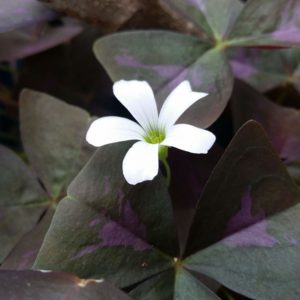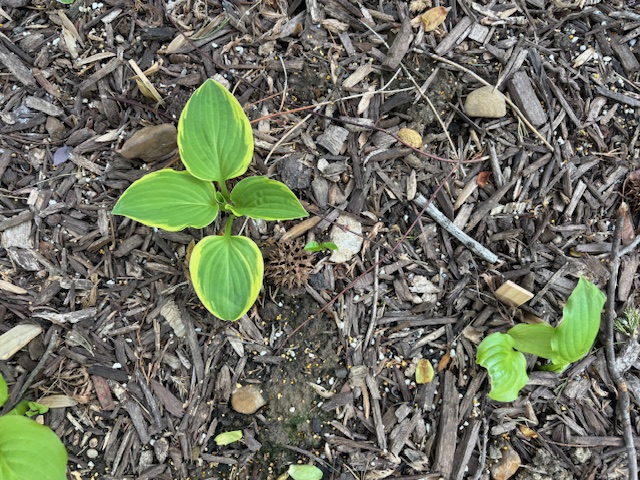Aunt Jane’s Shamrock
Views: 4342

Every Saturday, I have a little routine which includes watering my houseplants. As I was watering last Saturday, it occurred to me that I don’t grow houseplants – I nurture memories. Although there aren’t a lot of family photos on display in my home, I have “family” plants – the Christmas cactus from Daddy’s funeral, the lucky bamboo my children gave me for Mothers’ Day. You understand. When I see these plants, when I water them, I find myself smiling softly and sometimes, I’ll murmur endearments not just to the plant, but to the person represented by the plant.
Certainly this is the case with Aunt Jane’s shamrocks. Aunt Jane was my Wonderful Husband’s aunt. Her father was German, her mother was Irish. Her mother would tell her, “Acch, so the better part of you is Irish, m’dear!” She was a gracious lady who was born in a different age and to a different class.
By the time I got to know her, she was in her late 80’s…a tiny bit of a woman with lovely blue eyes and snow white hair. She was extremely kind to me, the newcomer in the family, for which I was very grateful.
When we would visit her, she would ask us if we “wanted anything”, meaning her curios, knickknacks, books, etc. She did have some very lovely pieces, but I could never bring myself to ask for anything.
But one evening, as we were about to leave, she told us to take some flower pots she had in the garage. In one of the pots was a shamrock plant.
What is a Shamrock?
“Shamrock” can mean several different plants, including clovers or wood sorrel. Aunt Jane’s shamrock is an Oxalis regnellii (also known as a False Shamrock). Whether it’s a real shamrock or not, it’s Aunt Jane’s shamrock as far as I’m concerned!
I took it home and placed it in a south-facing window. It keeps at least a few pure white, bell-shaped flowers on it all year around. Both the flowers and leaves are held up by very fine, nearly translucent stems. Once the leaf or flower is done, the stem dries up and droops down, just a tiny brown thread along the sides of the pot. It is a messy plant and does require “some grooming” – one time, I cut it all the way flush to the soil and it bounced back completely unfazed.

Its leaves fold up at night. The first time Wonderful Husband noticed this, after the plant had been in the house for several months already, he thought I had killed it. I “patiently” explained that the plant did that every night. I’m not sure he believes me yet.
I could pop it out of the pot and divide it to make more plants pretty easily. I could also put it out in my garage and let it go dormant, but I won’t do that. I’ve read that it will do just fine outdoors, but that it likes cooler temps than our Zone 6b Southern Indiana summers provide. It will probably stay a houseplant for the foreseeable future. Don’t forget to feed!
Although I couldn’t find much on the internet, the plant could be toxic to dogs and cats, so bear that in mind when you decide where to plant it or where you keep it inside the house.
Happy St. Patrick’s Day, Green Friends! It’s one day that EVERYONE can wear a shamrock and be Irish.
Meet Dona Bergman
Dona Bergman is a founding member, Southwest Indiana Chapter of the Indiana Native Plant & Wildlife Society, and an Advanced Master Gardener.







